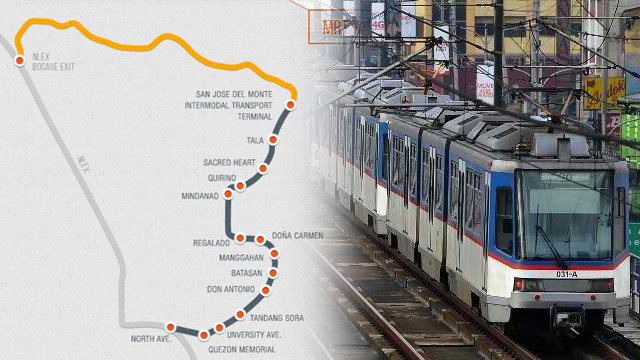
MRT-7: The New Gateway of the North
by Hanah De Vera
Once MRT-7 is built, it will only take Bulacan-based commuters 1 hour to reach Quezon City, from the current 3.5 hours travel time on Commonwealth Avenue
Finally, after 7 long years when the government signed the contract for the new railway project, the construction of the Metro Rail Transit Line 7 (MRT-7) kicked off last April 20, 2016 with a groundbreaking ceremony held at the Quezon Memorial Circle and is expected to finish by April 2020.
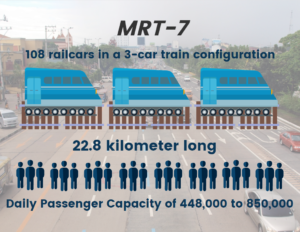 The contract was awarded to San Miguel Corporation-backed Universal LRT Corporation BVI Limited (ULC) last 2008 and was delayed because of the change of the administration, financial requirements and the controversy over whether the common station should be built.
The contract was awarded to San Miguel Corporation-backed Universal LRT Corporation BVI Limited (ULC) last 2008 and was delayed because of the change of the administration, financial requirements and the controversy over whether the common station should be built.
The rail component of the MRT-7 project involves the construction of a 22.8-kilometer that will operate 108 rail cars in a 3-car train configuration, with a daily passenger capacity ranging from 448,000 to 850,000. During peak hours, it will be able to accommodate 28,000 passengers per hour, per direction, and can be scaled up to serve up to 38,000 passengers.
When constructed, a one-way MRT-7 train during rush hour is equivalent to 776
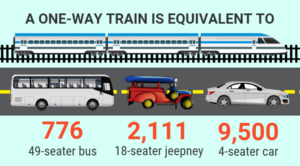 (49-seater) buses, 2,111 (18-seater) jeepneys, and 9,500 (4-seater) cars. This project will not only help commuters reach their destination on time but will also translate in decongesting major highways like Commonwealth Avenue and EDSA.
(49-seater) buses, 2,111 (18-seater) jeepneys, and 9,500 (4-seater) cars. This project will not only help commuters reach their destination on time but will also translate in decongesting major highways like Commonwealth Avenue and EDSA.
The line will involve the construction of 14 train stations namely:
| · Quezon North Avenue Joint Station | · Dona Carmen |
| · Quezon Memorial Circle | · Regalado |
| · University Avenue | · Mindanao Avenue |
| · Tandang Sora | · Quirino |
| · Don Antonio | · Sacred Heart |
| · Batasan | · Tala |
| · Manggahan | · San Jose del Monte |
The Quezon North Avenue Joint Station will be connected to the existing MRT3 and Light Rail Transit Line 1 (LRT1) via a common station on EDSA.
Although started, Ramon Ang does not ensure smooth-sailing construction because DOTC has not fully delivered right-of-way acquisition yet.
San Jose Del Monte’s Intermodal Transport Facility
The Araneta MRT Station would be the first MRT station outside Metro Manila, being located in the City of San Jose del Monte in Bulacan. The station would be located near the area of what is known as the site of the Colinas Verdes a premiere subdivision in San Jose del Monte, Bulacan. The area formally known as Ciudad Real is split between Tungkong Mangga & San Manuel.
When finished, the San Jose del Monte area is one that will benefit the most. The 3,372 populated City of Bulacan will be the center of new developments because of its accessibility. Bulacan-based commuters will only have to travel for 1 hour instead of the existing 3.5 hours via Commonwealth Avenue.
Last September 2007, the late Mayor Eduardo Roquero told The Philippine Star that a “super city” will rise at the 200-hectare former Puyat property in Barangay Tungkong Mangga where the first inter-modal terminal will be constructed. The inter-modal terminal will be the last terminal of the 22.8-kilometer MRT-7.
SM will be involved in the development of the said “super city” into a commercial and residential area and the retail aspect of the 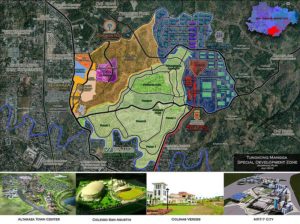 line. In its proposal to the government, Universal LRT said the mixed-use project will include the development of 7,300 residential units, 900 offices and a 90,000-square meter mall.
line. In its proposal to the government, Universal LRT said the mixed-use project will include the development of 7,300 residential units, 900 offices and a 90,000-square meter mall.
Once developed, the Bulacan mixed-use property will be more than three times bigger than the 60-hectare SM Central Business Park in Pasay City which hosts the 380,000-square meter SM Mall of Asia.
Eli Levin, Universal LRT managing director, said in a separate interview that once completed, the project will become the country’s first intermodal transport facility that will be directly connected to a rail station and a commercial and residential center.
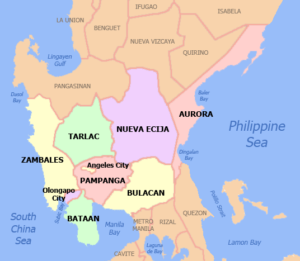 Township developments have also started in the area like Ayala’s 109-hectare Altaraza Town Center and Sta Lucia’s Colinas Verdes. With continuous developments, San Jose del Monte will soon be the fastest growing city in Bulacan with master-planned communities that can cater to the existing market in the central business districts that can eventually lessen the already dense areas in Metro Manila.
Township developments have also started in the area like Ayala’s 109-hectare Altaraza Town Center and Sta Lucia’s Colinas Verdes. With continuous developments, San Jose del Monte will soon be the fastest growing city in Bulacan with master-planned communities that can cater to the existing market in the central business districts that can eventually lessen the already dense areas in Metro Manila.
After its construction, other parts of Central Luzon will also experience some of the spill-over effects from San Jose del Monte like accessibility and possible future developments. San Jose del Monte’s intermodal transport facility will become one of the main gateways going in and out of Metro Manila making it a big development for neighbouring areas and provinces. Central Luzon will become more accessible from Quezon City making it more plausible for developers to notice and develop the area.
To further add, San Jose Del Monte can be an option for provincial bus operators to relocate their terminals. President Duterte in his first the State of the Nation Address said that all bus terminals along EDSA must eventually be removed and transferred to strategic areas outside of the metropolis with the end of decongesting said major thoroughfare.
With the removal of the terminals, it would help improve the flow of traffic along EDSA since provincial buses will no longer enter Metro Manila to load and unload passengers.
Effect of MRT-7 to the Real Estate Sector in the Affected Areas
Building near train stations is good for both developers and property owners. Residential and commercial projects near 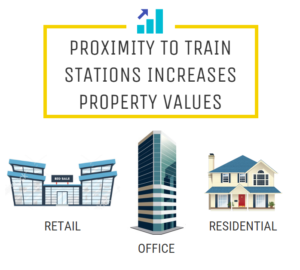 stations typically appreciate in value more rapidly than other projects. As demand for scarce properties near train stations increases, this trend will continue. This translates to significant increases in property values for medium density apartments, condominiums, commercial and retail properties located near the stations.
stations typically appreciate in value more rapidly than other projects. As demand for scarce properties near train stations increases, this trend will continue. This translates to significant increases in property values for medium density apartments, condominiums, commercial and retail properties located near the stations.
This is also the case for commercial properties. Walking distance to a train station and office rent per square meter are linearly related. This trend is also that of retail rents. In this case, retail rents close to train stations were almost three times higher than in other areas.
However, residential properties such as single family houses near these stations may have negative impacts on property values over time because of the residents’ loss of privacy, loss of view and shadowing impacts, and excessive noise coming from the trains passing by.
An article by University of California at Berkeley Professor Robert Cervero in the Winter 1994 issue of the Journal of the American Planning Association concludes that: “Average office rents near stations rose with system wide ridership; joint development projects added more than three dollars per square foot to annual office rents. Office vacancy rates were lower, average building densities higher, and shares of regional growth larger in station areas with joint development projects. Combining transit investments with private real estate projects appears to strengthen these effects.”
 Train station proximity is addressed from two considerations: a local station effect measuring the effect for properties within a 402 meter range and a global station effect measuring the effect of coming 250 meter closer to the station.
Train station proximity is addressed from two considerations: a local station effect measuring the effect for properties within a 402 meter range and a global station effect measuring the effect of coming 250 meter closer to the station.
The effect of these stations on commercial property value mainly takes place at short distances. On average, commercial properties within 402 meters of the station sell or rent 12.2% higher than residential properties in the same distance range. Where the price gap between the railway station zone and the rest is about 4.2% for the average residence, it is about 16.4% for the average commercial property. Note that the reference group for both properties is the set of properties that lay beyond the 402 meter range from the railway stations.
However, on a global effect consideration the relative impact is revered. On average, for every 250 meter coming closer to the station, the effect of railway station is 2.3% higher for residential properties compared to commercial properties.
Overall, the introduction of train stations into communities has had a positive benefit to both residential and commercial properties near stations; however, values have decreased for single family properties next to transit lines due to nuisance impacts.
Many opportunities are waiting for these affected areas, one of which is the opportunity to be more developed. Meanwhile, developers and real estate owners will be the ones that will immediately benefit when the construction of MRT-7 is finished.
References
Balabo, D. (2007, September 4). ‘Super City’ to rise in Bulacan. Retrieved from http://asianjournalusa.com/super-city-to-rise-in-bulacan-p3263-67.htm
Cervero, R. (1994). Rail Transit and Joint Development: Land Market Impacts in Washington, D.C. and Atlanta. Journal of the American Planning Association, 60(1), 83-94.
Construction of the MRT Line 7 begins | GOVPH. (2016, April 20). Retrieved from http://www.gov.ph/2016/04/20/construction-mrt-line-7-begins/
Debrezion, G., Pels, E. A., & Rietveld, P. (n.d.). The Impact of Railway Stations on Residential and Commercial Property Value: A Meta Analysis. SSRN Electronic Journal.
Economics Research Associates (1995). Transit Case Studies for the City of Hillsboro LRT Station Area Study.
Estavillo, M. (2006, August 23). SM Group To Create Real Estate Company For MRT-7 Project. Retrieved from http://www.gmanetwork.com/news/story/13796/money/sm-group-to-create-real-estate-company-for-mrt-7-project
Macquarie report: review of property value impacts at … (n.d.). Retrieved from http://www.reconnectingamerica.org/assets/Uploads/Property-Value-Impact-Vancouver-RT.pdf
Viray, P. (2016, April 20). DOTC breaks ground for MRT-7. Retrieved from http://www.philstar.com/headlines/2016/04/20/1574930/dotc-breaks-ground-mrt-7










